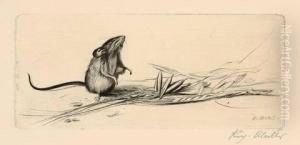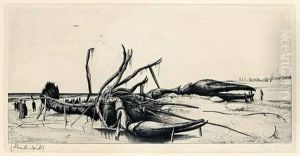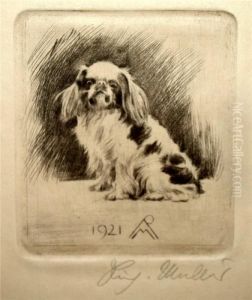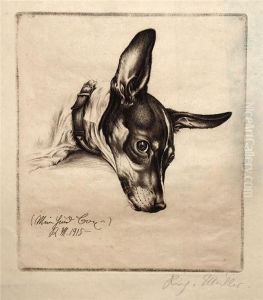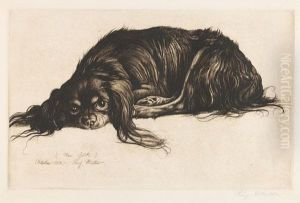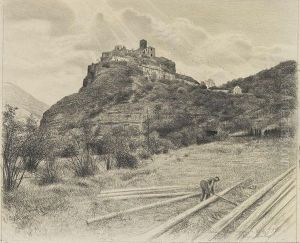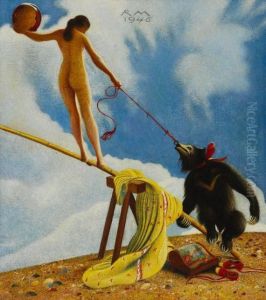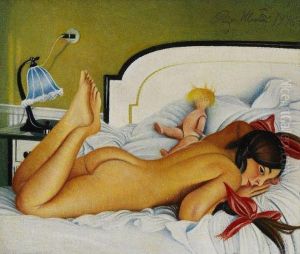Richard Muller Paintings
Richard Müller was a German printmaker, painter, and etcher born on April 25, 1874, in Tschirnhaus, Germany. He was known for his technical skill and precision in etching, as well as his ability to capture the nuances of light and shadow. Müller initially trained at the Royal School of Applied Arts in Dresden before progressing to the Dresden Academy of Fine Arts. His education was under the guidance of notable artists such as Leon Pohle and Ferdinand Dorsch.
Müller's early work was influenced by the Symbolist movement, and he often delved into themes of mythology and fantasy. His style was characterized by a blend of meticulous realism and dream-like elements, which set him apart from his contemporaries. During the early 20th century, Müller became a professor at the Dresden Academy, where he influenced a generation of artists, including notable figures like Otto Dix and George Grosz, who were part of the New Objectivity movement.
Throughout his career, Richard Müller experimented with various techniques and materials, including lithography and woodcut, but he remained most passionate about etching. His mastery of the medium brought him acclaim, and he was recognized with several awards and honors for his contribution to German art. Müller's work was marked by a fascination with the natural world, as well as an interest in the human form, often depicted with a sense of the uncanny.
The rise of the National Socialist regime in Germany posed challenges for many artists of the time, including Müller, whose work did not align with the Nazi ideology. However, unlike many of his contemporaries who faced persecution or were forced into exile, Müller managed to continue his artistic practice, although his later work is less known and studied than his earlier pieces.
Richard Müller passed away on November 11, 1954, in Dresden. His legacy is preserved in the form of his prints and paintings, many of which are held in museum collections across Germany and internationally. His contribution to the field of printmaking, particularly etching, remains significant in the history of German art.

